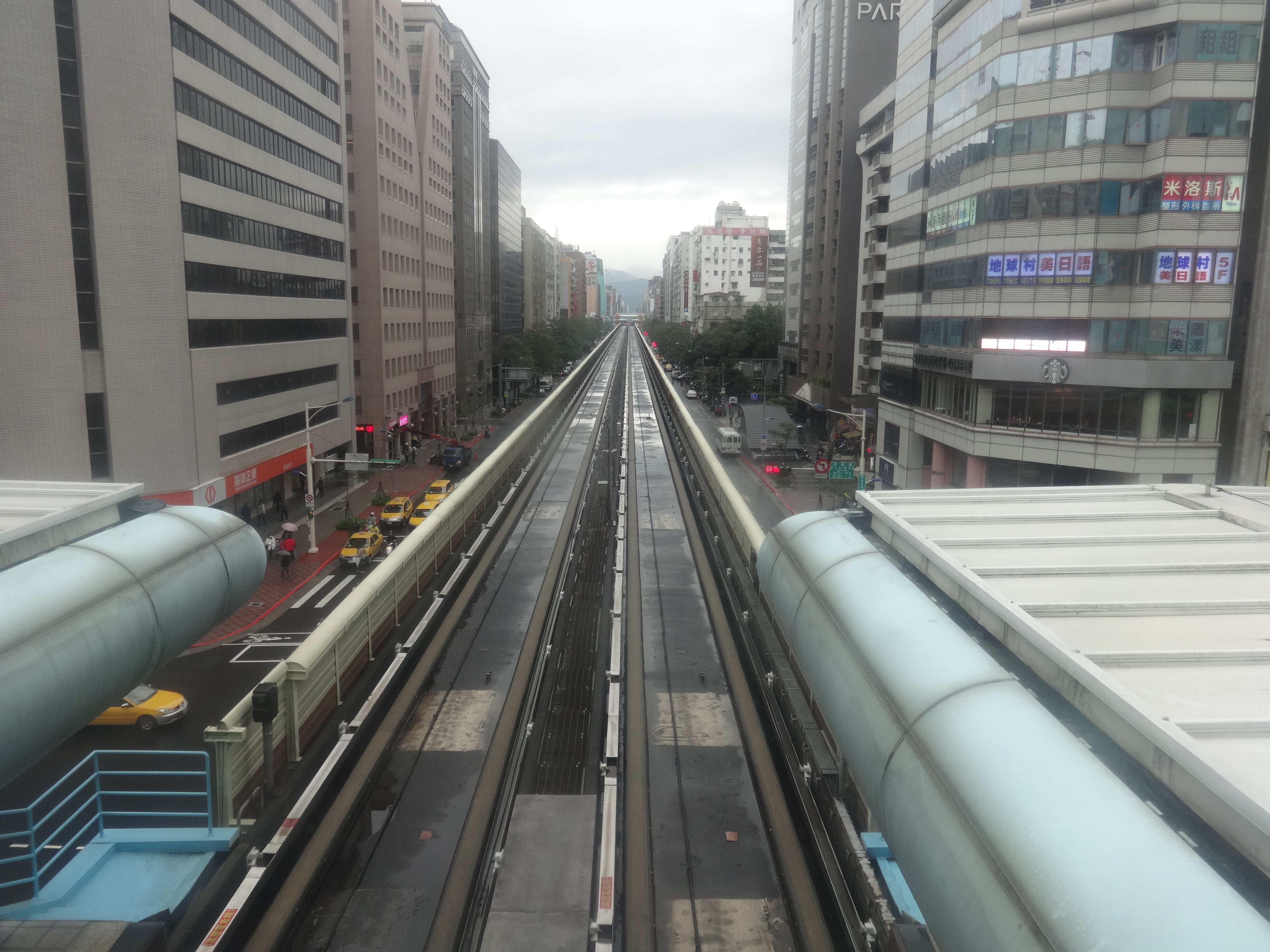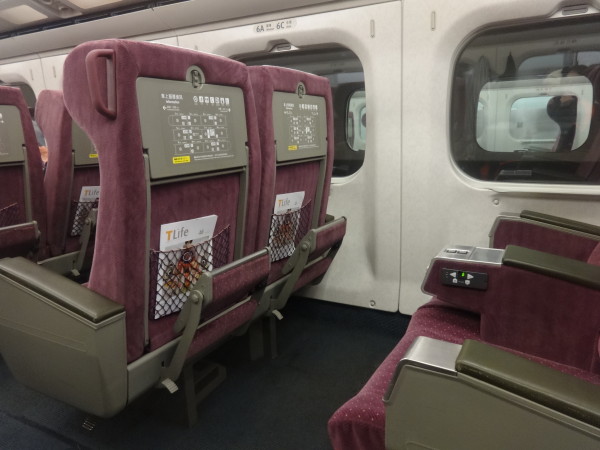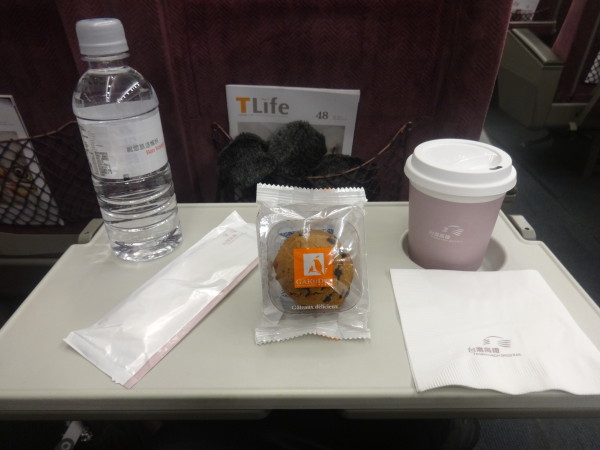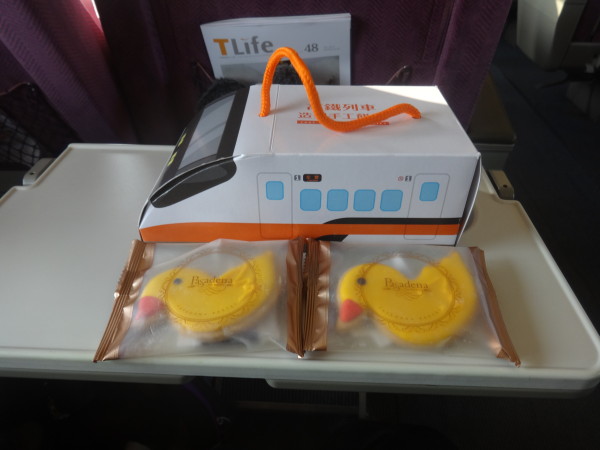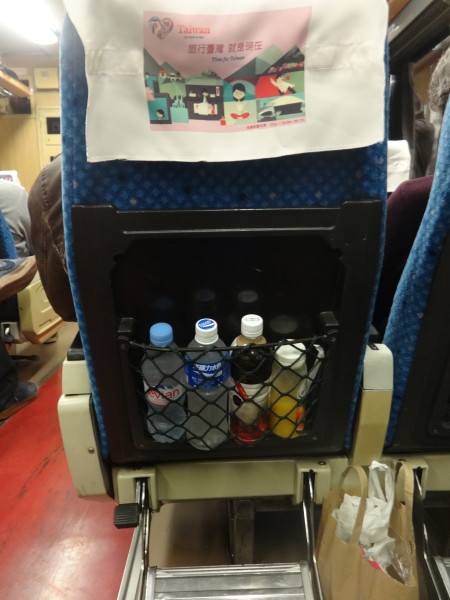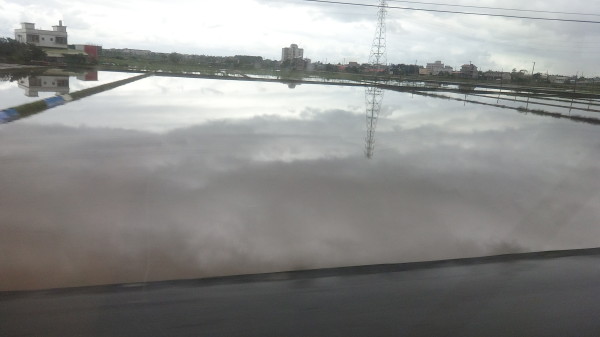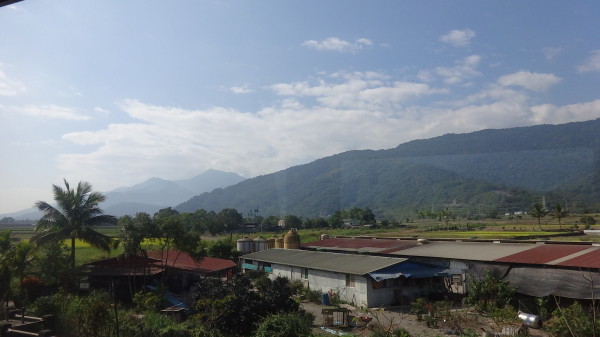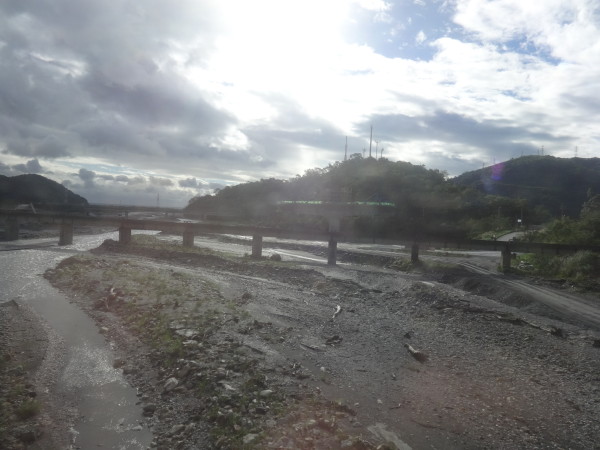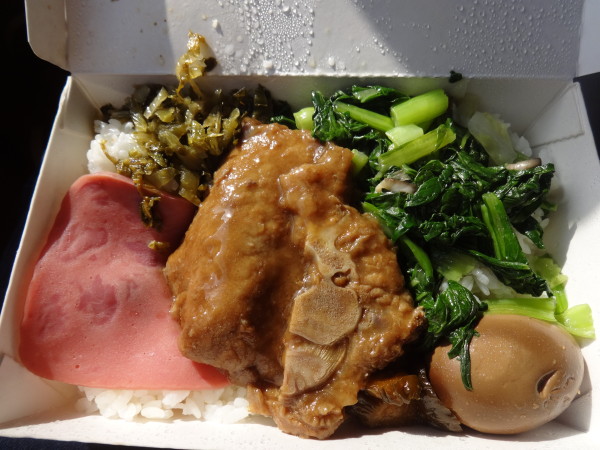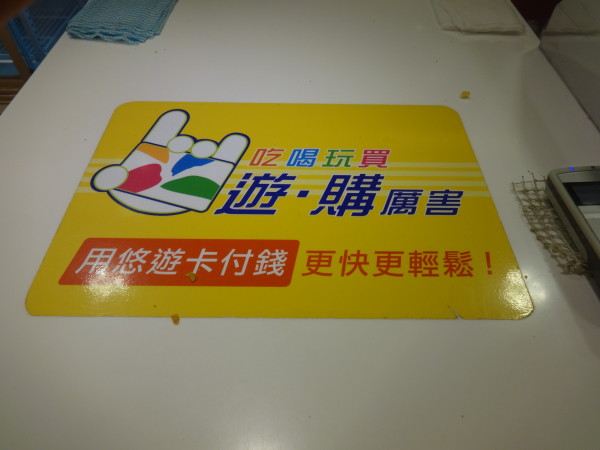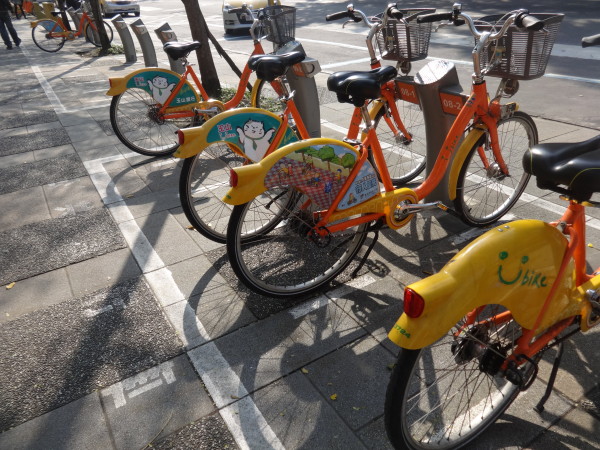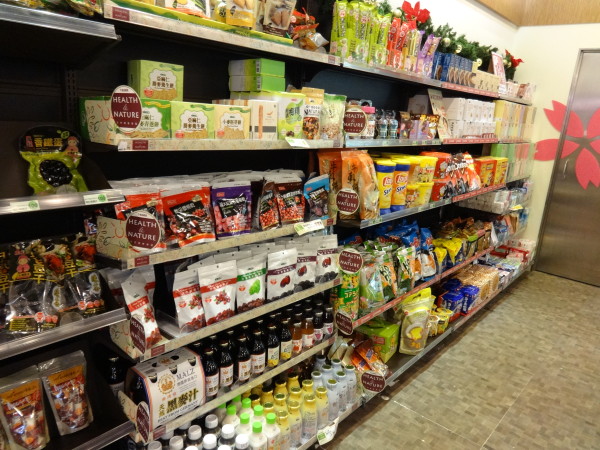Taiwan has many levels of convenient public transportation: Taiwan High Speed Rail, Taiwan Railway, and the Metro systems in all the major cities (e.g. Taipei MRT). All this on top of Taiwan Tourism Bureau’s Taiwan Tour Bus and ubiquitous taxis really make it possible to get pretty much anywhere on the main island. The video above is of the Taipei MRT, and as you can hear, they announce every stop in Mandarin Chinese, Taiwanese (minan), Hakkanese, and English.
Here are some of my experiences on various levels of Taiwan’s available transportation. I must warn you, though, that I love trains.
Taiwan High Speed Rail (THSR)
The Taiwan High Speed Rail makes it possible to take day trips to eight major cities up and down the length of the western side of island, and they are apparently adding at least two more stations in the new few years. We made our home base in Taipei, but we were able to take trips down to south Taiwan in a day or two and could have visited one major city each day if we wanted to. In eight days, you could literally experience the entire western coast of Taiwan and hit all the major metropolitan areas and be back before sunset every night. A trip from the north to the south takes about a little less than two hours.
For the sake of comfort, our crew took business class the whole way, which comes with spacious seats, electrical outlets, and pretty much unlimited beverages and snacks. On one occasion, we accidentally hopped onto the wrong train (thankfully still headed in the right direction) and I got a chance to experience the regular economy class seats. They weren’t too bad either, and I really didn’t make much use of the electrical outlets since the rides were pretty short (it’s high speed rail after all), and the crew was nice enough to provide us with all our snacks and beverages despite our being in the economy class (since we paid for business).
The adorable bullet-train shaped box of cookies totally caught my eye, as did the rubber ducky cookies that were for sale in honor of the two giant rubber ducks docked at Taiwan at the time, both of which exploded before we could even consider visiting them. Regardless, these cookies were actually really quite delicious, especially with all the complimentary business class tea and coffee.
Taiwan Railway
The bullet trains of the THSR were really comfortable, but the trains I enjoyed the most were the Taiwan Railway trains. These trains traverse the old-school railway systems that have been constructed over the past century, the earliest one built in 1891. Sure, these little cabooses and their worn rails are slower and creakier and have a little more wear-and-tear at the seams, but there’s definitely a historic charm to them. As I sat in them, rolling along from one destination to another, I fancied my grandparents and my great grandparents and my great great grandparents (you get the idea) having ridden the very same train I was in at that very moment. I imagined the train when it was brand-spanking-new, just off the assembly line, and riding out into the sunrise of its heyday.
The THSR trains are so fast, the view just kind of shoots right past you, like a ambient video on fast forward.
Compare that to the view you see rolling along on a Taiwan railway train.
Those high speed views are definitely a sight to behold and an experience in and of themselves, but the slowpoke flow of the old railways have much to offer in the form of views, much like the difference between chugging down an cool iced tea compared to slowly sipping steaming hot freshly brewed full-leaf tea and savoring every moment.
While the THSR dominates the metropolitan west coast of Taiwan, they offer zero access to the east coast, where much of the raw mountain and ocean tropical beauty of Taiwan still lays largely untouched, which means stunningly gorgeous views you’d rather not have zipping by too fast to take in.
While reading some airline travel magazines on the flight over, I learned that one of my favorite directors Hayao Miyazaki had actually got the inspiration for his movie “Spirited Away” from the old Taiwanese town of Jiu Fen that lies on the northeast side of Taiwan, which will be covered in Part 15 of this series. I love that movie dearly.
As I was riding the Taiwan Railway down the east coast of the island, I was suddenly struck with the scenery of plain upon plain of what were probably rice paddies, flat and far and wide sections of still water reflecting the sky like so many massive mirrors, with homes and roads floating like islands upon the patchwork of impalpable earth and unattainable sky. I immediately wondered if this was where the idea for the waterborne train in the movie had come from. It took my breath away.
Compare for yourself the view I saw with some soundtrack accompanied images from the film.
http://www.youtube.com/watch?v=C1yoXdG8jVg
There was no shortage of gorgeous views down the island’s east coast railways.
While you gawk at the spectacular views, you can also enjoy a hearty meal. For a few bucks, you can get your very own on-train bento lunch box, a classic train track meal over a bed of white rice.
Taipei MRT
When I studied Chinese in Taiwan back in the mid 90s, the Taipei MRT subway station was barely just coming online. My mode of public transport was mainly buses packed with sweaty people and little deodorant use steered by bus drivers that would sometimes stop in the middle of no where and tell you to get off because it was their break time (true story).
Now, the city is crisscrossed with a very new, very clean, very safe subway train system that will not only take you to every corner of this massive metropolis but is also actually ridiculously easy to use, even if you’re a monolingual, mono-literate English speaker. The machines for ticket buying or pass card recharges have an “English” button that you can press which changes everything from text to audio to English. The trains come like every two minutes, so you never really have to worry about ‘missing’ your train. There are maps everywhere, many coded with how much money it costs to get from where you are to where you want to go, and the trains never change direction, so signs clearly indicate which way each train is going.
The Easy Card is totally worth it, just tap and go, and you can even use it to make purchases at many restaurants and convenience stores like 7-Eleven or Yamazaki bakery. It’s literally like the everything card.
Aside from all these awesome trains, there are still the buses that can take you to nooks and crannies in every alley as well as taxis that will fill in the gaps in between. If you’re looking for somewhat guided and free form tours to different destinations around the island, the Taiwan Tourism Bureau’s Tour Bus services are excellent for really affordable prices. Each tour we went on was organized, flexible, fun, and safe, details of which will be forthcoming.
Of course, there’s always travel on foot, and I pretty much walked and climbed stairs for 3-8 hours every day I was there, so I didn’t have to watch my calories at all–I was a walking furnace. Taiwan’s government has been really making an effort to make the whole island bike friendly, so anyone who’s hankering for a bike ride adventure can totally travel the island on pedaled wheels alone.
In Taipei, if you don’t have your own bike, you can easily rent a public one, available at every major hub of city activity.
Next up, practical and fun, we’ll explore the plethora of convenience stores and how much more magical they are than ones in the United States.
- Excited
- Fascinated
- Amused
- Disgusted
- Sad
- Angry
